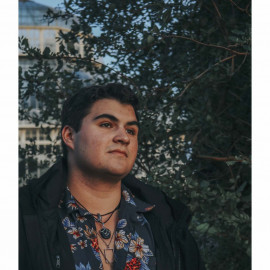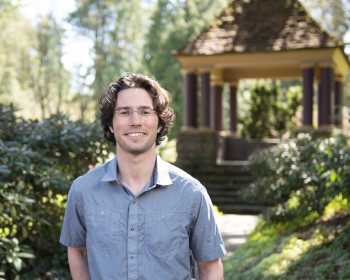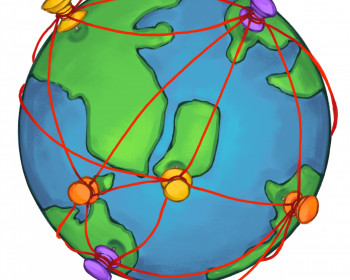Students Present Original Research Alongside Faculty at Annual Rogers Presentations
Each year, undergraduate students across departments have the opportunity to participate in the John S. Rogers Science Research Program, which supports collaborative scientific research with Lewis & Clark faculty. At this year’s virtual presentations, projects ranged from an interactive game on earthquake preparedness to analysis on ideologies surrounding color blindness and racial passing.
The summer months are rich with opportunities for students on the undergraduate campus. Many opt for internships, some of which are funded by Lewis & Clark’s summer grants. Others take on research projects in their field of choice, building on material from academic studies and learning new skills to prepare for further education. Although this past summer was unlike any other, with many plans canceled by the COVID-19 pandemic, the annual John S. Rogers Science Program forged ahead with reasonable accommodations for virtual collaboration.
The highly competitive program, which is supported in part by the James F. and Marion L. Miller Foundation, prepares students for complex research in their chosen discipline. With an acceptance rate of only 35 percent, the fellows team up with faculty to contribute to research projects full time over the course of three months, culminating in a presentation to showcase their findings in front of a general audience.
This year, projects included analyzing the toxic enzymes in brown recluse spiders with Professor of Biology Greta Binford and the construction of a home-built fiber laser with Visiting Assistant Professor of Physics Andrew Funk.

Usman, a psychology major from Palo Alto, California, emphasizes that learning from past surveys and designs to form new research questions is essential hands-on experience within the field.
“I was wrapping my head around ideas like, ‘How do we get quantitative questions into qualitative data?’ and ‘How do we effectively do that in a survey with both internal reliability and external validity?’,” Usman says. “It was a really interesting process and I learned so much about constructing studies and doing research in general.”
The pair worked with Leonard to develop a color blind ideology scale to assess how different ideologies around race foster judgment of those who participate, actively or passively, in racial passing. As the public health crisis unfolded over the course of the summer, the team added a section of analysis on how pandemic-related anxieties may reinforce these ideologies.

Both Usman and Clairagneau cite the mentorship of Leonard as a highlight of the program.
“Because of how great of a professor and researcher she is, I am now able to look at graduate schools with a clearer lens of what I want to be doing,” says Usman. “Being able to make that human connection, not between a student and professor but as two adults who are working and existing in the same field, really opened up avenues for deeper academic understanding.”
The team will continue their research through the fall semester as an extension of the summer program.
One interdisciplinary summer project with a local bent involved faculty from geological science, computer science, and psychology, who all worked together to simulate earthquake preparedness behavior in the Pacific Northwest. Three faculty members and three students collaborated on an interactive video game instructing players how to adapt in the wake of an earthquake and what to expect in its aftermath.

“This research connected my experience here with the city because the game is designed to simulate the Portland environment,” she says. “At one point I walked outside and thought, ‘I’m actually in my game.’ There’s always a chance of an earthquake happening, and this was a way to learn more about geology and earthquake preparedness.”
After graduation, Pencl intends to couple her computer science and mathematics majors with her neuroscience minor to pursue a career in computational neuroscience.
More Newsroom Stories
Public Relations is located in McAfee on the Undergraduate Campus.
MSC: 19
email public@lclark.edu
voice 503-768-7970
Public Relations
Lewis & Clark
615 S. Palatine Hill Road MSC 19
Portland OR 97219

